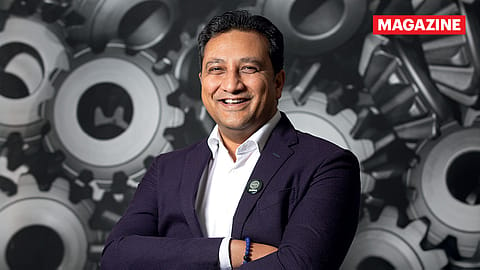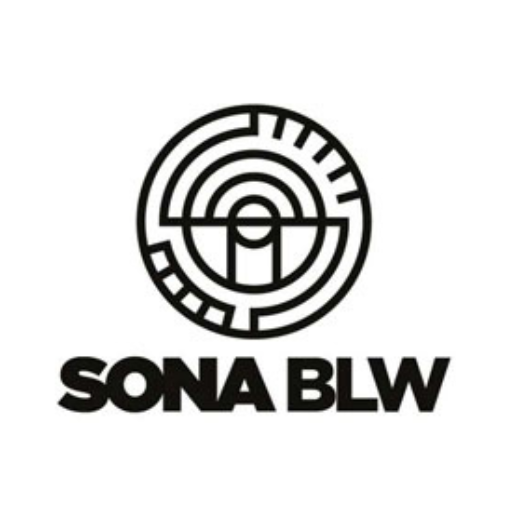The Sona BLW advantage: What fuels its resilience in a volatile auto world
From innovation to strategic acquisitions, Sona BLW is a success story in the automotive components space.

This story belongs to the Fortune India Magazine May 2025 issue.
IT HAS BEEN five years since Covid-19 unfurled its tentacles across the globe — locking doors, shutting shops, and bringing movement to a standstill. Neither owners nor their vehicles were moving. Demand vanished overnight as assembly lines grounded to a halt, and the once-steady rhythm of global auto component supply chains came to a stop.
Gurugram-based Sona BLW Precision Forgings (Sona Comstar), used that period of uncertainty to innovate and diversify, doubling down on the engineering excellence that had brought it this far.
“Production nahi ho raha hai to R&D pe paisa lagao (if production is not happening, spend money on R&D then),” says Vivek Vikram Singh, MD and group CEO, Sona BLW Precision Forgings. The company recorded its highest R&D spend of ₹91.5 crore in FY21, almost 6% of its ₹1,566.3 crore revenue that year. While R&D spends since haven’t matched the FY21 peak, Sona Comstar made rapid strides since its 2021 IPO. It launched eight new products — one in FY24 — which were commercialised faster than before. These accounted for close to half of its ₹20,700 crore order wins in FY24.
Today, Sona Comstar is a ₹3,185 crore business (FY24), with a 28.3% Ebitda margin and profit after tax nearly doubling to ₹517 crore. It is the eighth company on Fortune India’s 100 Emerging Stars list. The company has a robust three-year net income CAGR of 26.69%. It had a CAGR of 30.3% between FY17 and H1FY24, outpacing the sector’s 4.8%.
It has cemented its position as the world’s largest manufacturer of differential gears, commanding an 8.8% global market share, along with a 4.4% share in starter motors as of CY24. Domestically, Sona Comstar dominates with over 60% share in the passenger vehicles (PV) segment, 90% in commercial vehicles, and 85% in tractors, serving a wide array of Indian OEMs.
Innovation & diversification
While necessity is the mother of innovation, diversification is a necessity for Sona Comstar. “We’ve doubled every three years since FY16,” says Singh. This can be attributed to the constant addition of new products, forays into markets, and lack of dependency on a single customer.
More Stories from this Issue
Sona Comstar’s revenue mix has diversified across geographies, products, and market segments. As of 9MFY25, no single product accounts for more than a third of its revenue — differential gears contribute 30%, differential assemblies 28%, and other drivetrain parts 20%. On the market segment front, PVs dominated with 72%, while electric two- and three-wheelers and non-automotive segments each at 8%, reflecting Sona’s expanding focus on broader mobility solutions.
“If you keep adding newer industry segments, newer products, you expand by increasing your volume share as well as your market share,” adds Singh.
The company’s strategic pivot towards electrification is evident in the sharp decline in ICE-dependent revenue — from 25% in FY21 to less than 10% by FY24. Over the past three years, the product revenue mix has shifted, with battery EVs rising to 36% in 9MFY25. This underscores the firm’s deliberate move away from traditional engines toward future-ready, powertrain-neutral solutions.
“It is set for faster growth than the underlying industry, driven by content enhancement in the existing portfolio, market share gains in key geographies, and new products such as traction motors, controllers, BSG, sensors,” said Motilal Oswal in its January report.
(INR CR)
A key example of this pivot is the company’s sensors business, led by its 2023 acquisition of Serbian firm Novelic. Originally a radar services firm, Novelic has evolved into a diversified sensor products company under Sona’s stewardship. Recent milestones include commercialising Zone Monitoring Sensors and a breakthrough 180° field-of-view radar device, marking Sona Comstar’s foray in safety tech.
Even in newer segments such as advanced suspension motors, the company is building from the ground up. From just 0.2% of revenue in 9MFY24, it is expected to become a major revenue stream within three years, Singh revealed during the Q3 results.
The company does not like to be labelled as an auto components manufacturer. Its leaders call it an auto technology or product engineering company.
“At Sona Comstar, innovation isn’t an outcome, it’s a mindset that drives every decision,” says Sunjay Kapur, non-executive chairman, Sona Comstar. “These innovations aren’t built in silos, they’re the result of deep partnerships with OEMs and startups alike, where engineering excellence meets agility,” he says.
In FY24, it spent ₹79.3 crore on R&D against ₹73.1 crore in the previous year. “We believe anything we make, the core tech should be ours. If you own your tech, you can keep improving it to make it better and cheaper,” says Singh.
The company has followed this philosophy since the beginning. Back in 2005, much before the termination of its technical know-how agreement with Mitsubishi Materials, Sona Autocomp deliberately chose to become the majority shareholder. It went on to make acquisitions, including Thyssenkrupp’s precision forging business (which had previously acquired BLW, the inventor of Warm Forging Technology), and Comstar entities. The same philosophy is reflected across its portfolio. Battery EV revenue surged 52% YoY in the 9MFY25 to ₹930 crore, accounting for 36% of total revenue — up 28% YoY. EV revenues have grown 10 times faster than ICE revenues.
As of Q3FY25, the company has 57 EV programmes across 32 customers, and EVs contribute 76% to its ₹23,200 crore net order book. With wins like the differential assembly programme for electric PVs in India, the pipeline is expected to expand.
Sona Comstar is building capabilities for tomorrow. In 2024, it invested $4 million for a 1.5% stake in ClearMotion Inc., a U.S.-based firm specialising in software-defined chassis systems, aligning with its ambition to diversify its portfolio. This gives Sona access to advanced active suspension tech deployed in high-end EVs like the Chinese Nio ET9 and will open the gates to a $14 billion global addressable market, as anticipated by Singh.
Behind the numbers is a culture driven by engineering. Of the total workforce of 4,764 people, 24% is dedicated to R&D. The company runs four R&D centres and three engineering capability hubs. From a company that once shipped bevel gears, Sona Comstar today is building the nerve centre of next-gen electric mobility.
A rocky tariff terrain ahead
For Sona Comstar, the road ahead might be paved with uncertainty. Looming large is the prospect of higher U.S. tariffs on Indian automotive components. The firm is watchful. During the Q3FY25 earnings call, Singh said speculation around exports being hit might be exaggerated.
Short-term turbulence may well impact the company’s top line, as seen in recent results reflecting weak demand in the EU, corrections in North American inventory cycles, and India’s slow commercial vehicles market. Sona Comstar’s low fixed-cost structure, high return on capital, and relentless focus on core engineering have repeatedly allowed it to pivot.
The challenge may not be to entirely avoid the impact of the U.S. tariffs — but to absorb, adapt, and accelerate past them. As Singh puts it, “Revenue is vanity. Profit is sanity. But cash is reality. And we’ve always planned for reality.”
